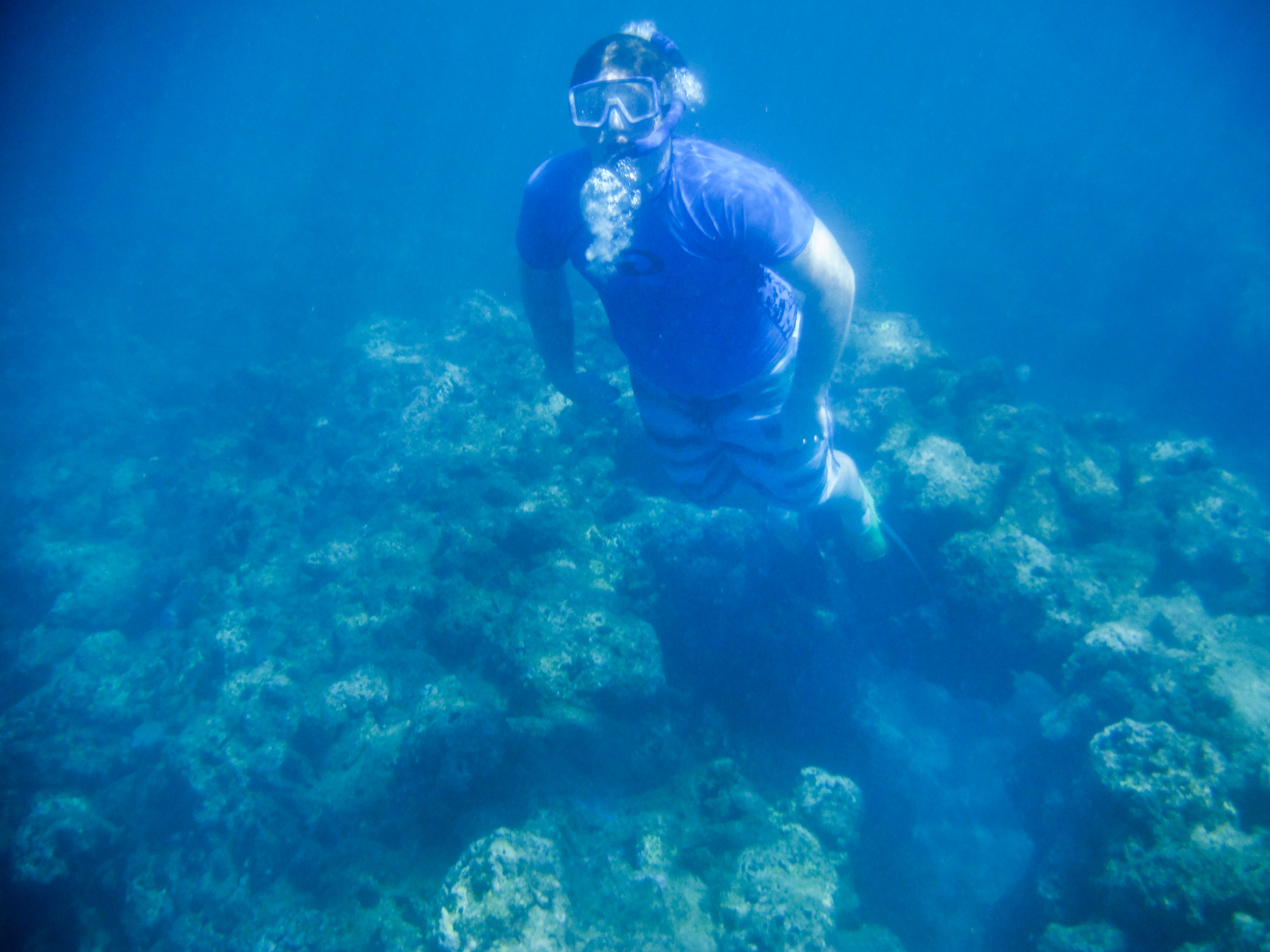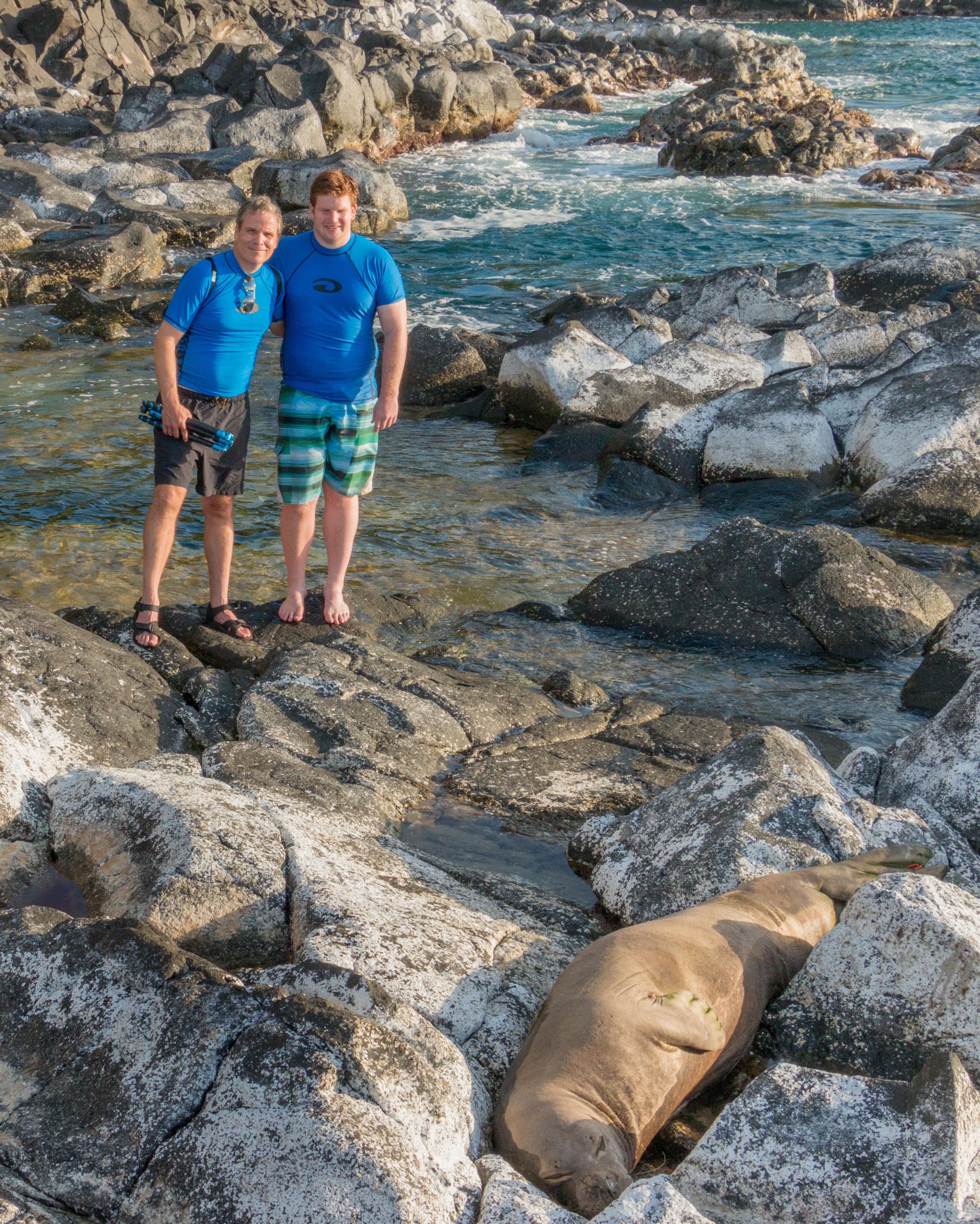I just returned from a well-needed, relaxing vacation to the Hawaiian Islands. I had a great time stand-up paddle boarding on Hanalei Bay, cliff jumping at Shipwreck Beach, and skipping stones and swimming under Wailua Falls…
I had a blast snorkeling with turtles at Poipu Beach on the south side of Kauai as well as swimming through the coral at Tunnels Beach on the north side…
It was a good trip to say the least. But, what really stood out as the highlight of my trip was the Hawaiian monk seal.
We were lucky enough to see two different Hawaiian monk seals in our time on the island of Kauai. There are only about 1,300 Hawaiian monk seals left in the wild, and only around 44 that make Kauai their home, so we were quite lucky to get a peek at two of these playful creatures. The seal pictured above was lounging in the waters of Poipu Bay, surrounded by a multitude of snorkelers and googly eyed onlookers trying to get a photo of the juvenile marine mammal. He was completely oblivious to it all, having a wonderful time scratching his back on the rocks and splashing about just for the mere fun of it. This particular Hawaiian monk seal was only four years old, making him quite young, as the seal’s average life span in the wild is anywhere from 25 to 30 years old. I’ll admit that his boisterous behavior was endearing, but what really drew me in to this animal species was just how few of them are left in the wild.
There used to be three different types of warm water monk seals: the Mediterranean monk seal, the Caribbean monk seal, and the Hawaiian monk seal. The Caribbean variety was last seen some time in the 1970s and is now extinct today. The Mediterranean monk seal only has a population of about 300 to 600 individuals left in the wild. For me, being able to see the front lines of an animal fighting against the very real threat of extinction was something I had never experienced before. What really struck me was how docile and relaxed these seals were on land. The two we were able to see had no fear of humans at all. My dad and I were even able to get a picture with one near Queen’s Bath.
This second guy was quite a bit bigger than the first, but he was quite content to take a nice long nap in his perfectly selected rock niche and wait as the tide slowly rose to take him back out to sea. The Hawaiian monk seal is active at night hunting for fish, but it hauls itself onto shore during the day when its primary predator, the shark, is on the prowl. This gives the seal protection from its most feared enemy. However, the Hawaiian monk seal’s biggest threat is no longer sharks, but humans. Like most endangered species, the Hawaiian monk seal has struggled due to extreme habitat loss at the hands of human expansion. The Hawaiian monk seal is also extremely susceptible to marine debris. They have the highest entanglement rate of all marine mammals. If current practices are not changed, this species will join the list of animals lost to extinction as their numbers have fallen more than ten percent each year since 1989.
I think the reason I became so enthralled with these endangered seals was because they weren’t concerned with anyone or anything other than themselves. They were content to simply lay on the rocks or to scratch their backs or to roll around in the sand. The monk seals took pleasure in the little things, or at least it seemed that way to me. Such a non-threatening animal just seemed so helpless against the onset of extinction. It is up to us to take the initiative to save them and other animals that can’t save themselves. It is up to humans to try to reverse the damage we’ve already done.
Find out how you can help save this wonderful species here! If you want to see these beautiful mammals in the wild, check out our Hidden Hawaii Nature Adventure, where we spend time looking for monk seals and other wildlife at Kauai’s Kilauea Point.






























